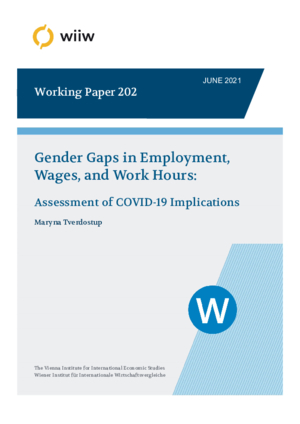Gender Gaps in Employment, Wages, and Work Hours: Assessment of COVID-19 Implications
wiiw Working Paper No. 202, June 2021
39 pages including 1 Table and 17 Figures
The COVID-19 pandemic has highly asymmetric effects on labour market outcomes of men and women. In this paper, we empirically investigate the dynamics and drivers of gender gaps in employment rates, wages and workhours during the pandemic. Relying on Estonian Labour Force Survey data, we document that the pandemic has, if anything, reduced gender inequality in all three domains. Our results suggest that, while the evolution of inequalities mirrored the infection rate development – rising as infections mounted and declining as the first wave flattened – overall, the pandemic did not exacerbate gender gaps in 2020. The cyclical increases in gender disparities were largely driven by parenthood, as child-rearing women experienced a major decline in their employment rate and workhours, as well as gender segregation in the most affected industries. The higher propensity to work from home and better educational attainments of women deterred gender wage gap expansion, as wage returns to telework and education rose during the pandemic. Our results suggest no systematic expansion of gender gaps, but rather short-term fluctuations. However, labour market penalties for women with young children and women employed in those industries most affected by COVID-19 may last longer than the pandemic, threatening to widen gender inequality in the long run.
Keywords: COVID-19, employment, gender, inequalities, wage gap
JEL classification: J16, J21, J31
Countries covered: Estonia
Research Areas: Labour, Migration and Income Distribution
